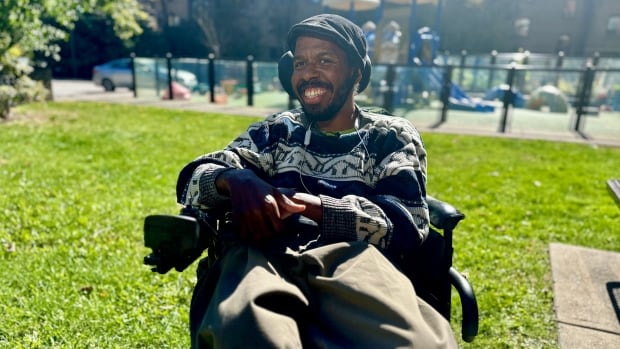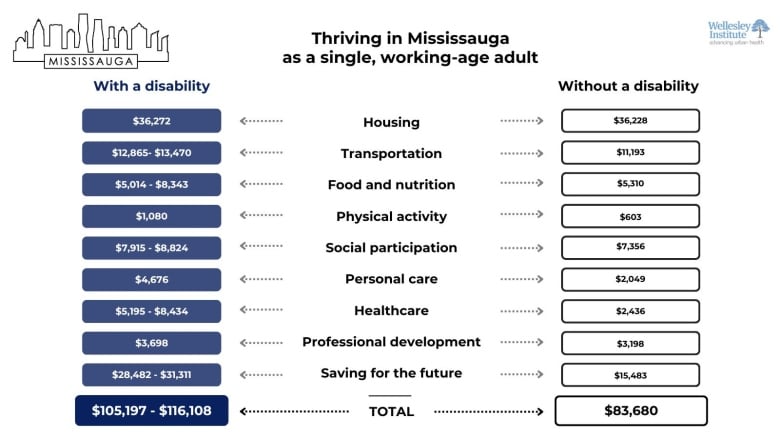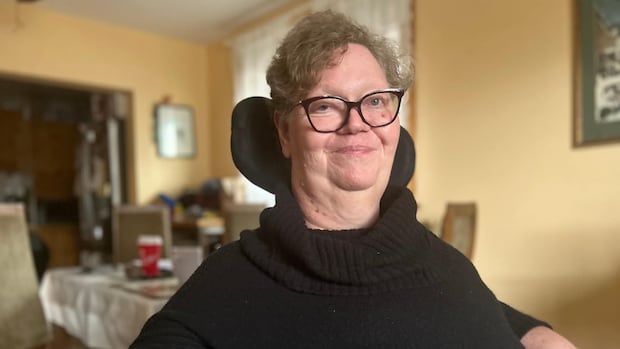
When Franklyn McFadden needs to repair his $15,000 wheelchair, that expense is on him.
It’s just one of many extra costs that he says comes with living with a disability.
“I didn’t choose to be a person in a wheelchair, and I don’t profess to enjoy the fact that I have to use one,” he said.
It’s widely recognized that living with a disability comes with a distinct set of needs. And now, new research from the non-profit Wellesley Institute shows the cost of thriving in the GTA — which it defines as living a healthy, engaged life — is 39 per cent higher if you live with a disability, than it is for those who don’t have a disability.
“I thought the information was quite bang on,” said McFadden, a disability advocate, after looking at their findings.
“In fact,” McFadden said, “I don’t think that all of the costs associated with having a disability have been appropriately addressed.”
The research found that in Toronto, living a healthy, engaged life as a single, working-age adult with a mild to moderate physical or mental health disability can cost as much as $81,000 per year, compared to $62,000 per year without a disability.
In Mississauga, those costs are even higher — as much as $116,000 more per year for people with a disability.
“We learned that people with disabilities have extra needs in all aspects of their health, but there were particularly extra costs in food and nutrition, transportation, housing, social participation and saving for the future,” said Christine Sheppard, a researcher at Wellesley Institute.

Wellesley Institute says estimates were drawn from consultations with 39 people living with disabilities and supplemented with price information from major stores and suppliers and national expenditure surveys.
Researchers asked participants what items, resources and services they would need to thrive, and then the researchers costed it out. Adding up, for example: average rent for a one bedroom apartment in Toronto, insurance rates, taxi rides, basic accessibility aids in a bathroom/kitchen, laundry service, grocery and delivery service.
The institute notes that cost figures in its report are a guide, not precise personal spending — each individual will have varying needs.
Researchers found that because people with a disability often retire at an earlier age, they have higher retirement savings needs. And there are around eight million Canadians living with disability, Sheppard said.
“When people don’t have access to the resources that they need to live a good life, they have to make choices that compromise their health,” she said.
“Individuals, communities, employers and governments all have a role to play.”
The Accessibility for Ontarians with Disabilities Act aims to make the province fully accessible by 2025. Ahead of the deadline, CBC’s Vanessa Balintec speaks to Tracy Odell, former president of the advocacy group Citizens With Disabilities Ontario, on her experiences as a wheelchair user and life-long advocate for accessibility for all.
McFadden knows first hand what making those compromises feels like. He recalls times when he struggled financially and opted for fast food, because it was more accessible and less expensive.
“If we want to start anywhere, we need to give people adequate resources to at least lift them out of poverty,” he said.
“We don’t choose the lives that we live. We just want to make the best choices and the best attempts at living the good life.”
